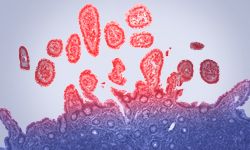High Dose Cyclophosphamide Activity in MCL Is Similar to Other Bcell NHLs
Salvage therapy with high‐dose cyclophosphamide showed meaningful clinical activity in a cohort of 6 patients with mantle cell lymphoma who were previously treated with ≥2 prior lines of therapy and had no other available options. These patients made up 14% of the 42 participants in a phase II study showing similar efficacy in adult patients with other relapsed or refractory B‐cell non‐Hodgkin lymphomas.

Salvage therapy with high‐dose cyclophosphamide showed meaningful clinical activity in a cohort of 6 patients with mantle cell lymphoma (MCL) who were previously treated with ≥2 prior lines of therapy and had no other available options. These patients made up 14% of the 42 participants in a phase II study showing similar efficacy in adult patients with other relapsed or refractory B‐cell non‐Hodgkin lymphomas (NHLs).
The MCL cohort had an overall response rate (ORR) of 33%, including 2 partial responses (PRs). There was 1 patient with stable disease (SD) and 3 patients with progressive disease (PD). In comparison to the other histologies, the ORR observed in the MCL cohort was slightly lower, but the study investigators did not find the differences across histologies to be significant.
The group of patients with diffuse large B-cell lymphoma (DLBCL; n = 26) had an ORR of 50%, which included 1 complete response (CR) and 12 PRs. Four patients in the DLBCL cohort had SD, and 9 patients had PD. Participants with indolent B-cell NHL (n = 10) had an ORR of 40%, including 4 PRs. There were no CRs observed in this cohort. Three patients did have SD. Another 3 patients with indolent B-cell NHL had PD. The ORR in the overall population of patients with relapsed or refractory B‐cell NHL was 45% (P= .6326).
The median overall survival (OS), a co-primary end point, across all histologies was 3.0 months (95% CI, 1.9-5.0). Additionally, the 2-year survival rate was 12.2% across all patient subgroups (95% CI, 7.3%-29.9%). The differences in OS across histologies was not significant. The DLBCL cohort had a 2.3-month median OS compared with 5.6 month in the other histologies. (P=.4152).
Notably, OS was better in patients who had a response to high‐dose cyclophosphamide compared with patients who did not respond (6.2 months vs 7.9 months;P<.0001). Patients who were 6 months or more away from their most recent treatment with cytotoxic chemotherapy also had a better OS rates. Other factors that were associated with better OS were having a performance status of 0 or 1 versus ≥2 and normal serum lactate dehydrogenase level.
The safety profile for high-dose cyclophosphamide was favorable for patients with MCL, as well as for patients with other histologies.
Overall, hematologic grade 3/4 adverse events (AEs) occurred in 100% of patients, while non-hematologic grade 3/4 AEs occurred in 43%. The grade 1/2 and grade 3/4 hematologic toxicities included neutropenia (98% and 90%, respectively), febrile neutropenia (0%; 14%), anemia (90%; 57%), and thrombocytopenia (93%; 64%). The grade 1/2 and 3/4 non-hematologic toxicities observed in the study were nausea/vomiting (26% and 5%, respectively), hyponatremia (48%; 31%), heart failure (5%; 2%), tumor lysis syndrome ( 0%; 5%), infections (52%;12%), and fatigue (74%; 12%). Five percent of patients in the overall population died due to treatment-related AEs (n = 2).
Patients in the study received 1 cycle of intravenous (IV) high-dose cyclophosphamide 1.5 .g/m2for 2 consecutive days. Participants who were not refractory to to the anti-CD20 antibody rituximab (Rituxan) were given IV rituximab 375 mg/m2on day 1 of each cycle. An additional cycle of high-dose cyclophosphamide was given to patients who reached an objective response (PR or CR).
The conclusion drawn from the study is that 1 or 2 cycles of high-dose cyclophosphamide is an effective treatment for patients with relapsed/refractory MCL and other B-cell NHLs. Additionally, the investigators hypothesized that this treatment could lead to more innovative therapies for patients with relapsed/refractory B-cell NHL.
Reference:
Michot J, Annereau M, Danu A, et al. High‐dose cyclophosphamide for hard‐to‐treat patients with relapsed or refractory b‐cell Non‐Hodgkin’s Lymphoma, a phase II result [published online December 14, 2019].Eur J Haematol. doi: 10.1111/ejh.13369.